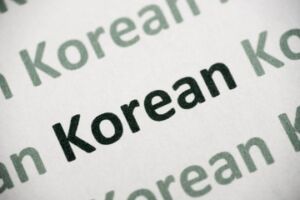Korean language
Korean is an East Asian language spoken by about 77 million people. It is the official and national language of both Koreas: North Korea and South Korea, with different standardized official forms used in each country. It is a recognized minority language in the Yanbian Korean Autonomous Prefecture and Changbai Korean Autonomous County of Jilin Province, China. It is also spoken in parts of Sakhalin, Russia and Central Asia. The Korean alphabet is known as Hangul. The letters for the five basic consonants reflect the shape of the speech organs used to pronounce them, and they are systematically modified to indicate phonetic features; similarly, the vowel letters are systematically modified for related sounds, making Hangul a featural writing system. Hangul was created under King Sejong during the Chosun Dynasty (1393-1910). in 1446, the first Korean alphabet was proclaimed under the original name Hunmin chong-um, which literally meant “the correct sounds for the instruction of the people.”





